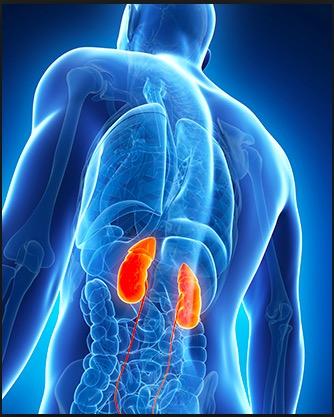In 2013, when Gilead's Sovaldi, the first new generation of drugs that successfully cured people of hepatitis C virus (HCV) was approved, there was no shortage of criticism of the "thousand dollar pill" (1), but much less said about what the drug could do. Sovaldi was the first direct-acting antiviral drug (DAA) that could be used without interferon/ribavirin (2). Sovaldi saved the livers and lives of hep C patients, but no one would have predicted that the lives of people with kidney disease would also benefit. Now they can. Hepatitis C drugs are so good that they can enable people who need kidneys to get them from HCV-positive donors.
In the ensuing five years, both Gilead and other companies have built upon Sovaldi's success (3) by developing nine other drugs, some of which are novel DAAs and some that are combinations of DAAs (4). For example, in 2016 the FDA approved Merck's Zepatier, a two-drug combination containing two DAAs that act by different mechanisms. And in 2017, Gilead received approval for Vosevi, a combination of two previously approved drugs and one new one (5). Zepatier's cure rate ranges from 94-100%, and Vosevi's between 96-100% (6). Hepatitis C has been defeated.
One demonstration of how thoroughly that HCV has been beaten is an amazing feat, which was just reported in Annals of Internal Medicine, Zepatier works so well that ten patients who needed kidneys and got them from hepatitis C-infected donors without being infected themselves (7) just by taking Vosevi after the transplant. This is both amazing and unprecedented. American Council's Senior Fellow Dr. Chuck Dinerstein, a retired vascular surgeon, had this to say:
"It is a tribute to the dedicated effort of pharmaceutical scientists and the miraculous nature of our health system that a kidney, infected with a virus, can be so effectively treated that it provides benefit and causes no ill effect when placed in an immunocompromised patient." (8)
Dr. Chuck Dinerstein, ACSH Senior Fellow
To emphasize the magnitude of this discovery, here is a list of health conditions that will almost always disqualify potential donors. Note that I just crossed one off the list. (9)
- High blood pressure treated with medication
- Diabetes. Donors are considered on a case by case basis.
- Systemic lupus erythematosus
- Polycystic kidney disease
- Substance abuse
- Psychiatric illness. Donors with current mental health concerns may not be candidates for living kidney donation.
- Heart / heart valve disease or peripheral vascular disease (disease of blood vessels in the legs)
- Lung disease with impaired oxygenation or ventilation.
- Recent cancer or a history of cancer that was not completely treated
- Low kidney function shown by creatinine clearance testing
- Protein in the urine > 300 mg per 24 hours (a test of kidney function)
- Active hepatitis B or
C infectionor HIV infection. - Use of medicines that are known to cause kidney damage
- History of blood clots
The taming of AIDS and the cure for hepatitis C are monumental advances, most of which came from the evil pharmaceutical industry after decades of research and the billions of dollars required to fund it. Maybe it's not so evil after all.
NOTES:
(1) Sovaldi does not really cost $1000 per pill. Pharmacy benefit managers negotiate prices with companies. The price they pay is unknown. There has been criticism of PBMs for raising costs.
(2) Although Vertex's Incivek and Merck's Victrelis were the first DAAs, they were taken with interferon and ribavirin - the previous (and terrible) therapy rather than replacing it. Neither drug worked very well or stayed on the market very long.
(3) Sovaldi has a cure rate of about 90% depending on the genotype of the virus.
(4) The combination of multiple drugs into one pill is not a marketing ploy. As is the case with HIV, a combination of drugs (cocktail) that inhibit specific events in the life cycle of the virus, is more effective and less likely to generate resistant strains. (Truvada, which contains two anti-HIV medications that work by the same mechanism - inhibiting the HIV reverse transcriptase enzyme - is a notable exception.)
(5) In addition to being approved for "normal" hep C patients, Vosevi is also the first drug to be approved as a rescue therapy for patients who failed Sovaldi therapy.
(6) Some genotypes, especially 2 and 3 are more difficult to treat. This explains the range.
(7) The recipients were found to have no detectable HCV after 12 weeks. In HCV+ patients this is considered to be a cure.
(8) This accomplishment is even more impressive once you take into account that kidney recipients need to take anti-rejection drugs, all of which are immunosuppressive, making them even more susceptible to infection.
(9) Just a friendly reminder that know-nothing critics of the industry (Marcia Angell and Sidney Wolfe - I'm talking about you) are dead wrong when they dismiss the value of what they call "me-too" drugs and I call follow-on drugs.

Marcia Angell. 2004




